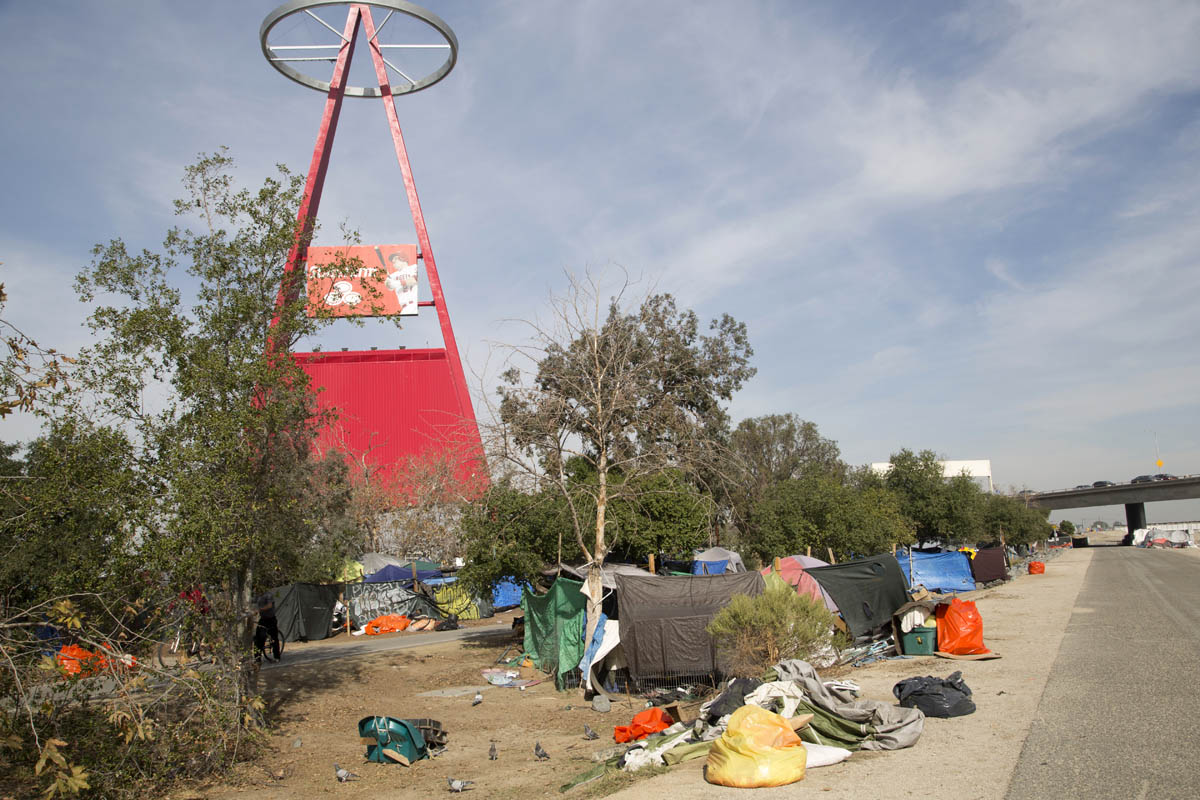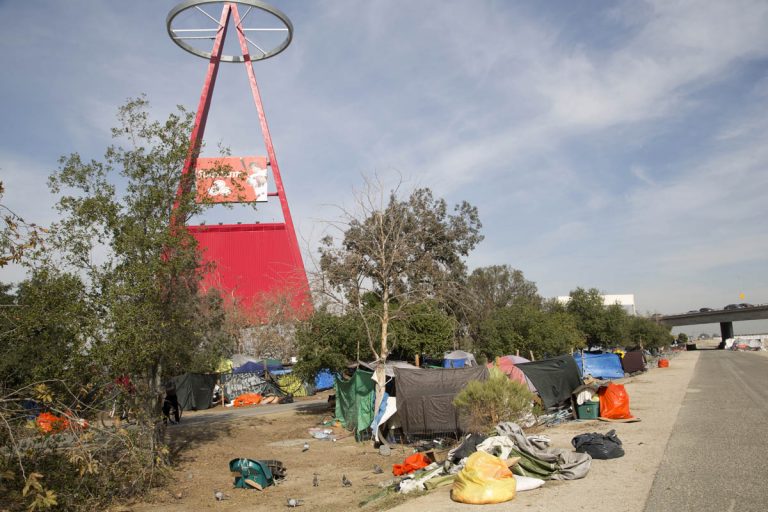
by Sara Terry
It is one of the largest homeless encampments in the United States – hundreds of makeshift structures and 700 to 1,000 residents. Not far from Disneyland, it winds for two to three miles along the Santa Ana River Bed in Orange County, California, a sand-covered concrete flood control channel on one side and a changing urban landscape on the other – the parking lot of Angel Stadium, the Orange County Register newspaper building, a mobile home park, a fancy apartment complex, glass-covered office buildings. Occasionally a cyclist zooms by on the bike path that runs straight through the encampment, but mostly it’s residents – many of them on bikes (which neighborhood locals complain are stolen). Some structures stand alone; others are grouped together in compounds, with makeshift fences, for greater security. Dogs are everywhere, chained on guard duty, in bicycle baskets, or on leashes with their owners. Signs went up on January 16th – officially announcing that the city will clear the riverbed homeless encampment on January 22nd as part of a plan to close the area for an “environmental remediation project.” County officials say the area is unsafe for habitation, especially during the upcoming rainy season, but homeless advocates have called the plan illegal and inhumane.
This is the latest chapter in California’s ongoing struggle with homelessness and an unrelenting affordable housing crisis. Some 25 percent of the nation’s homeless – about 118,000 people – live in the Golden State. Homeless people have slept along the Santa Ana River Bed for at least a decade, but the population has increased in recent years, as Orange County’s homeless population has grown by eight percent, to an estimated 4,500 people. According to Brad Fieldhouse, executive director of CityNet, a non-profit contracted by the county to provide services to residents of the encampment, 164 people have been moved out of the river bed in recent months and into some kind of housing, from emergency shelters to relocations with family members. But hundreds still remain without another place to go. “They will fade back into the nooks and crannies,” he says. “Back onto the streets of the surrounding cities.”
